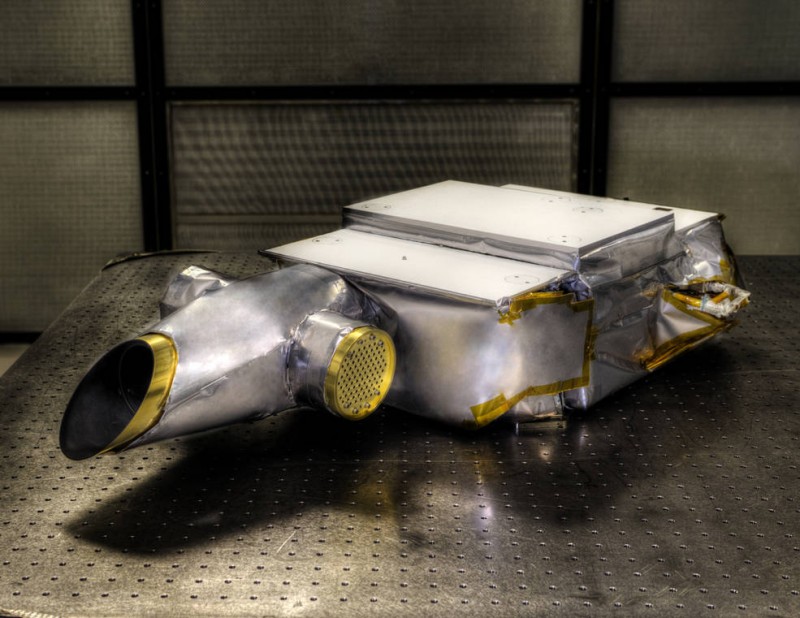
The OSIRIS-Rex is NASA’s probe set to travel to a near-Earth asteroid called Bennu and return with geological samples for study. Scheduled to launch in 2016, the mission has passed a couple of key milestones already this summer. It recently completed its Mission Operations Review, demonstrating the team’s progress in developing the procedures to execute the complicated activities needed to return a sample from an asteroid. In July, 2015, the mission received its second instrument at Lockheed Martin, for installation onto the spacecraft. The instrument is the Visible and Infrared Spectrometer (OVIRS), and it’s designed to analyze visible and near-infrared light from the asteroid, enabling it to discern the presence of water and organic material.
The Goddard Space Flight Center designed and built this new OVIRS instrument. Its job will be to split the light from the asteroid Bennu into its component wavelengths. This process – reminiscent of what an ordinary prism does when it refracts or splits sunlight into an array of colors – will cover a wide scope of wavelengths and identify the unique spectral signatures of chemical elements within the asteroid.
Researchers will use the results of the spectral analysis to decide on the appropriate area to collect geological samples from Bennu. Dennis Reuter, OVIRS instrument lead, said in a July 8 statement to NASA:
Through the team’s efforts, OVIRS has become a remarkably capable instrument which we expect to return exciting science from asteroid Bennu.
Mike Donnelly, OSIRIS-REx project manager, said:
The OVIRS team has met all of their technical requirements. This is another step in completing the spacecraft and sending it on its way to rendezvous with the asteroid Bennu.

OSIRIS-Rex is the first mission by the United States that will return samples from an asteroid. The mission, scheduled to launch in September of 2016, is expected to reach its target in 2018 and return back to Earth in 2023.
The near-Earth asteroid Bennu has a diameter of 538 yards (492 meters). NASA’s LINEAR project discovered it on September 11, 1999. It is named for a bird of Egyptian mythology.
Bennu was selected for study for several reasons.
A primary reason is that Bennu is a near-Earth object (NEO). We on Earth have become increasingly aware that asteroids can and sometimes do strike our planet, and Bennu is one of those objects that has a potential to do so. The next time of a potential strike by Bennu is late in the 22nd century. Bennu completes an orbit around the sun every 436.604 days (1.2 years) and every 6 years comes very close to Earth, within 0.002 Astronomical Units (0.002 Earth-sun distances).
For a sample return mission like OSIRIS-REx, the easiest asteroids to visit are those in orbits similar to Bennu. Plus we want to visit those asteroids, to explore and expand about capability for landing on potentially hazardous asteroids and hopefully redirecting their orbits.
Click here to read more about why Bennu was selected for this mission.

Bottom line: NASA’s OSIRIS-REx mission is on target for a 2016 launch to near-Earth asteroid Bennu. The goal is to reach Bennu in 2018 and return geological samples back to Earth in 2023.











